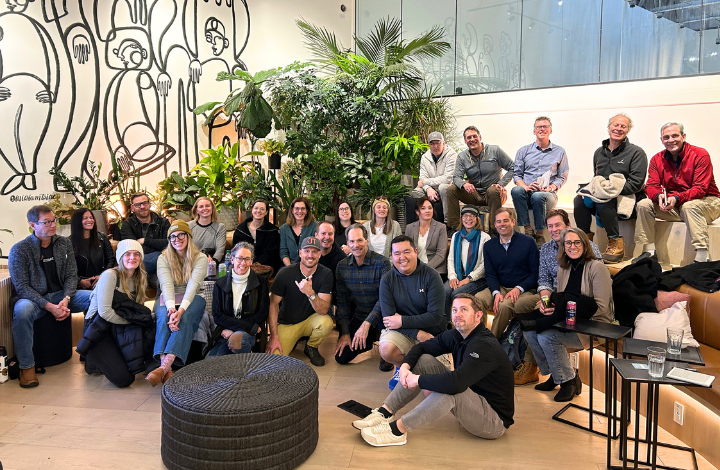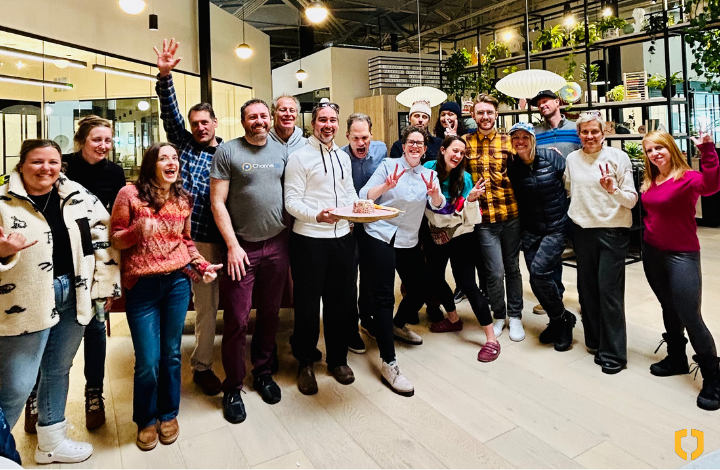How’s the content for your coworking space looking?
Pretty good? Amazing? Nonexistent?
No matter where you are in your content journey, you can make improvements.
Content is a long game. We try strategies, track what works and what doesn’t, course correct as necessary, and keep at it.
Here are 10 quick wins to improve the content marketing for your coworking space.
1. Know Your Audience
First things first, who are you trying to reach? If your initial response is “everyone,” you need to niche down. Quite a bit. The oh-so-alluring, huge market of “everyone” is actually no one.
Determine who you serve then speak directly to them. Potential members want to know who you are, what you stand for, who you support and how. They want to see if they’re a good fit for your space and community.
Trying to be all things to all people is a recipe for bland and boring.
2. Create, Create, Create
At the risk of stating the obvious, you have to create content to have an effective content marketing strategy.
If you’re stuck at the starting line, it’s time to get going.
Start today.
Create something.
Publish something.
You have to start somewhere.
You’ll learn more from actually publishing content than you ever will just thinking about it.
3. Be Consistent
Once you’re publishing content, do so regularly and consistently.
It’s better to publish once a month for three months in a row than to publish three times in one week because you’re super stoked about content marketing, then publish nothing for three months because things got busy.
Create a schedule and content calendar that works for you and your team, then stick to it.
4. Make a Point or Promise
You know those stream-of-consciousness rants that ramble around through different topics and ideas? Sometimes they’re fun to read, but most of the time they’re just confusing and I end up leaving the post pretty quickly.
Stream of consciousness is a fantastic writing exercise to help you blow the dust off of your brain and improve your writing chops, but it’s not content marketing.
Content marketing makes a point or a promise, it speaks directly to your target audience, it follows up on the point or promise, and it gives readers the next step to take.
Clarify exactly how you’ll help, inspire or motivate your readers, then do that as clearly and concisely as possible.
You’ll keep people’s attention and they’ll keep coming back for more, which is the name of the content game.
5. Create Evergreen Content
Evergreen content is content that has a long life. You can share it now, in a few weeks, in a few months and maybe even in a few years.
Evergreen content is a smart marketing strategy for a number of reasons:
- You get more bang for your content buck if you can reshare the same relevant and engaging content more than once
- Evergreen content can be great for SEO if you get the headline and keyword phrases right
- You build up a library of useful content that can be repurposed as videos, blog posts, social media micro posts, graphics etc.
- Readers will recognize you as a resource
6. Include a Call to Action (CTA)
The call to action (CTA) is the catalyst of effective content marketing.
Once you have people’s attention, you must give them the next step to take with you. Maybe that next step is scheduling a tour of your space; maybe it’s calling you for more information; maybe it’s coming to an upcoming event; maybe it’s subscribing to your newsletter.
Whatever you want people to do next—and make sure it’s something that benefits them—becomes your CTA.
Don’t publish anything without a CTA.
7. Get Into a Service Mindset
Old school advertising was like a megaphone blasting messages to the masses. We were passive consumers, whether we liked it or not.
Not so anymore.
To get—and keep—people’s attention, we need to create content that is helpful and valuable. We need to really understand the struggles, goals and hopes of our target audience and create content that is relevant, engaging and useful.
The best way to do this is to adopt a service mindset. Find ways to help your target market, then do that again and again and again.
Be generous. Give without receiving. Look for creative ways to serve people, then make that the heart of your content model.
8. Think Big and Go Beyond Yourself
Stop trying to do everything on your own.
You don’t want to try to drag people to your content, one at a time, over and over.
Use the power of leverage and community outreach to expand your reach exponentially.
Identify allied people, organizations and businesses, make friends with them, find ways to help and support them, include them in your content, and ask them to share your content with their audience.
People are happy to share content that makes them look good, so do that with organizations with an overlapping target audience. Here are some ideas to get started:
- Your local Chamber of Commerce
- Local tech and startup meetups
- Your local SBDC
- Local mentorship programs
- Local business organizations and nonprofits
- Neighboring businesses
- Local schools and educational programs
- Local coffee shops and restaurants
- Entrepreneurial programs
- Startup events and organizations
You can also leverage local events and even seasons. For instance:
- Bike to Work Week
- Tourist season
- Startup Week
- Hackathons
- Back to School season
9. Check, then Double-check for Typos
Typos are painful.
Mine, yours, the author of the book I’m reading, the person who wrote the website copy for a website I visited this yesterday.
People are forgiving of a typo, but when you start racking up typos in every blog post, social media post, website page and email, it reflects poorly on your company.
It reads as a lack of attention to detail.
You’re asking people to trust you to help them grow their business. They want to know you are capable, competent and together.
Sloppy copy sends the opposite message.
It just does.
Once you’ve written your content, step away from it. Then come back later and read it slowly, with fresh eyes. Read what you see, not what you think is there. Watch for run-on sentences, the wrong word (their, there, they’re), words that spell check doesn’t catch (“I live my cat” versus “I love my cat”), etc.
I know, it’s another step in a process that not everyone loves as much as I do.
But it’s important.
10. Get the Formatting Right
Your content should be readable, spacious and scannable.
It should be visually appealing and show people, at a glance, what to expect.
Use short sentences and paragraphs, use H2 and H3 subheaders, use lists, use italics, use pull quotes, use bold.
These things keep readers engaged and scrolling, which is the name of the game.
Gain community building skills in 5 minutes a week
with weekly letters from Cat





